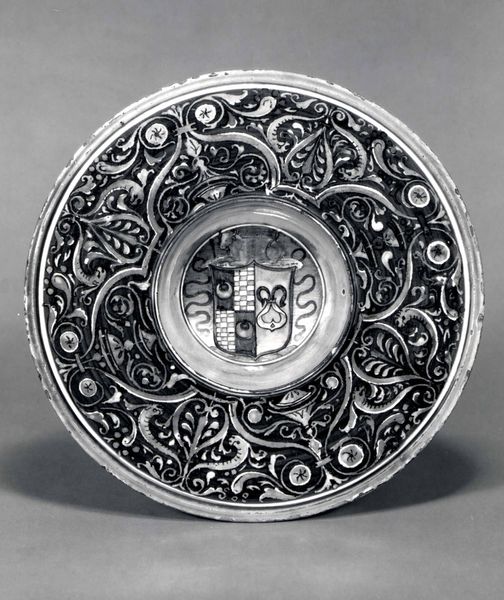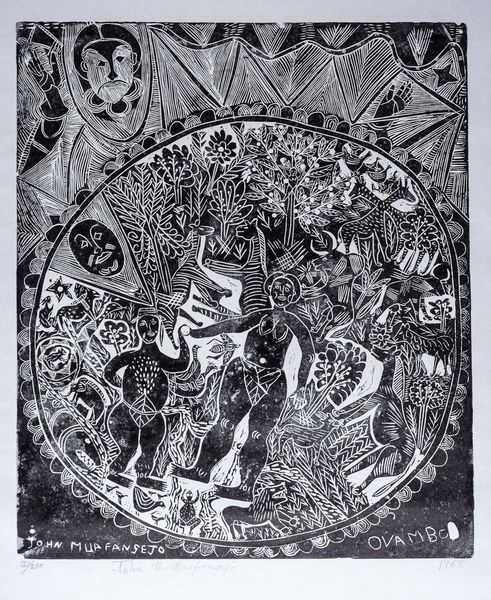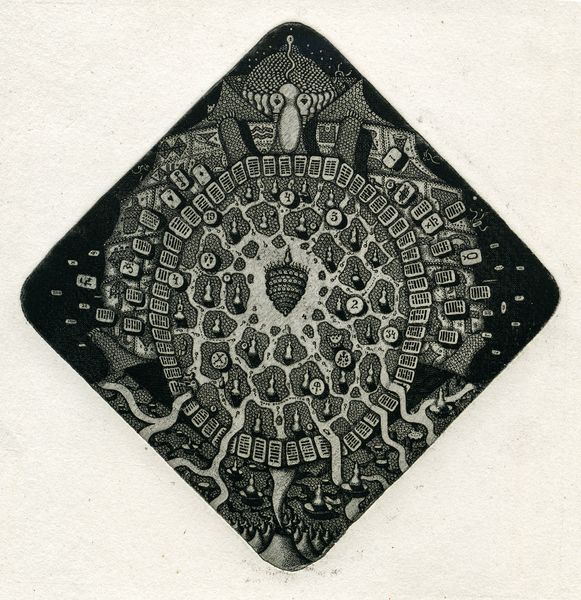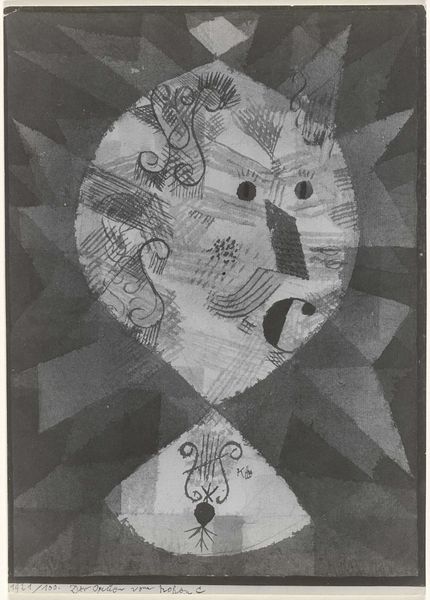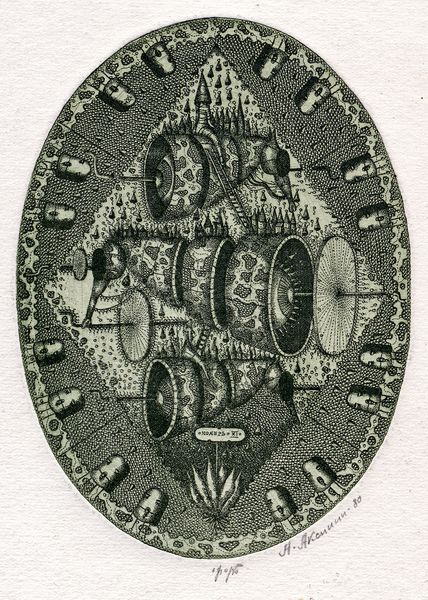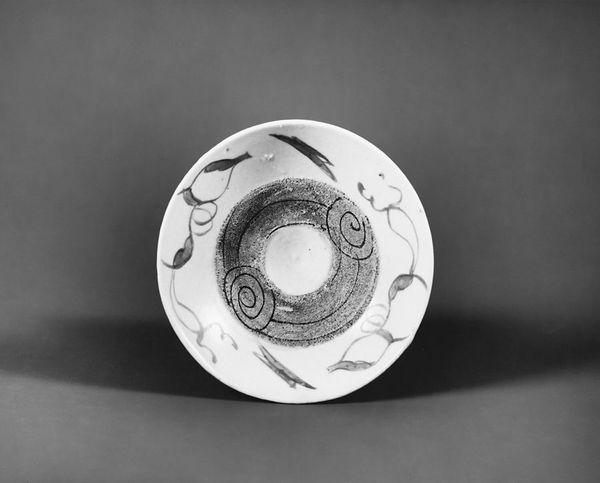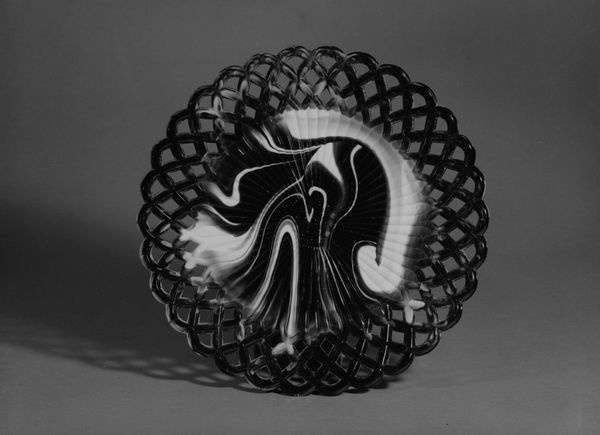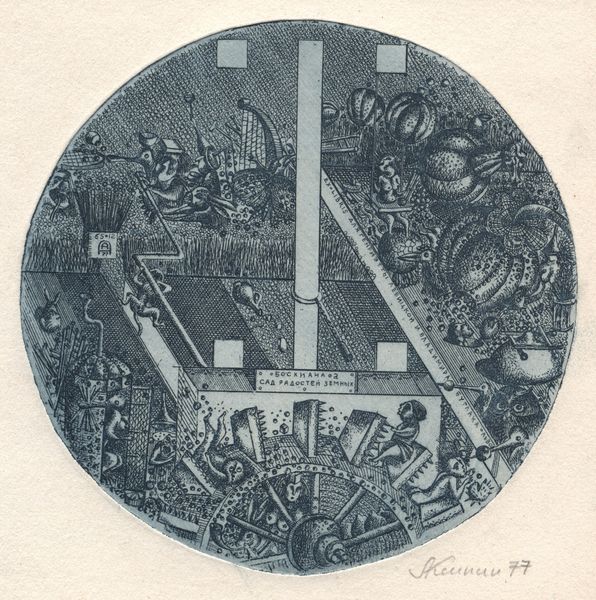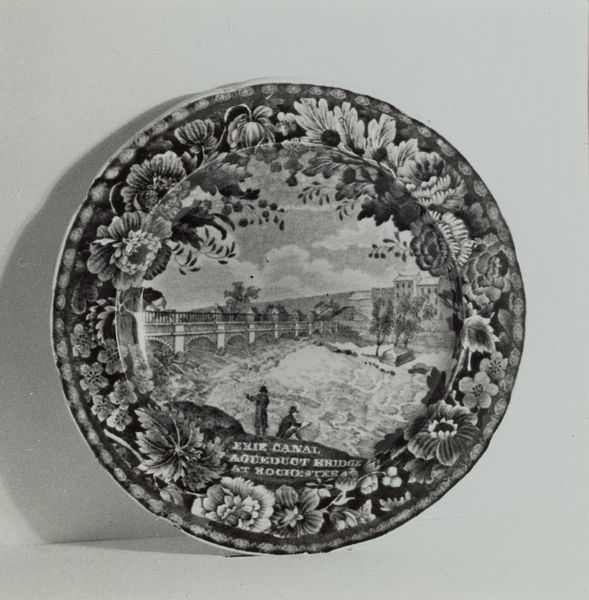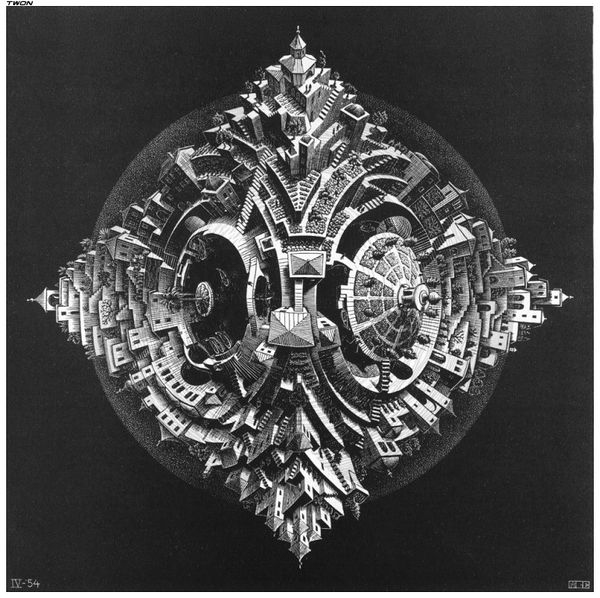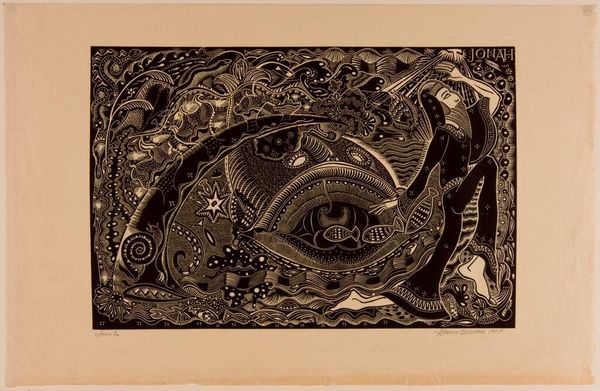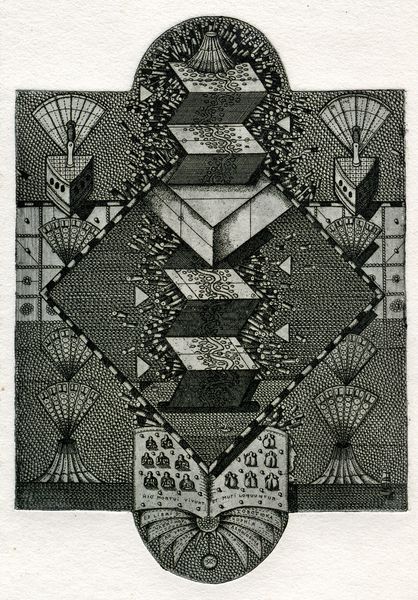
tempera, ceramic
#
portrait
#
tempera
#
ceramic
#
figuration
#
11_renaissance
#
decorative-art
#
italian-renaissance
Dimensions: Diameter: 8 5/16 in. (21.1 cm)
Copyright: Public Domain
Editor: This is "Plate (tondino)" made in 1519 by Maestro Giorgio Andreoli, and it’s currently housed at the Metropolitan Museum of Art. The materials listed are tempera and ceramic. At first glance, the ornamentation stands out so vividly. It’s almost overwhelming. What is your take on this piece? Curator: The initial impression is indeed that of highly elaborate decoration. Notice how the central portrait is framed by concentric circles, a vortex drawing the eye inward. Consider then the interplay between positive and negative space in the outer register. The artist balances representational elements—musical instruments, scrolls bearing inscriptions—with purely ornamental flourishes. Editor: That's a helpful way to describe what's happening. The combination creates an interesting rhythm around the portrait. What can we say about how tempera on ceramic informs this overall structure? Curator: The use of tempera on ceramic offers a unique surface quality, a subtle matte finish that contrasts with the glazed areas, adding depth. It also allows for detailed linework. How might the artist be using these contrasts and details to give focus and meaning? Editor: Well, I hadn't really considered it so meticulously before. I think the textures and sharp linework highlight both the precision and the intricacies embedded into a functional object. That seems like an essential formal element, placing something utilitarian in an elevated context through artistry. Curator: Precisely. This reflects an integration of form and function, but also demonstrates how the materiality enhances the visual rhetoric. Close study continues to reward the viewer here. Editor: Yes, definitely, I agree! I will be more careful with surface quality next time.
Comments
No comments
Be the first to comment and join the conversation on the ultimate creative platform.
